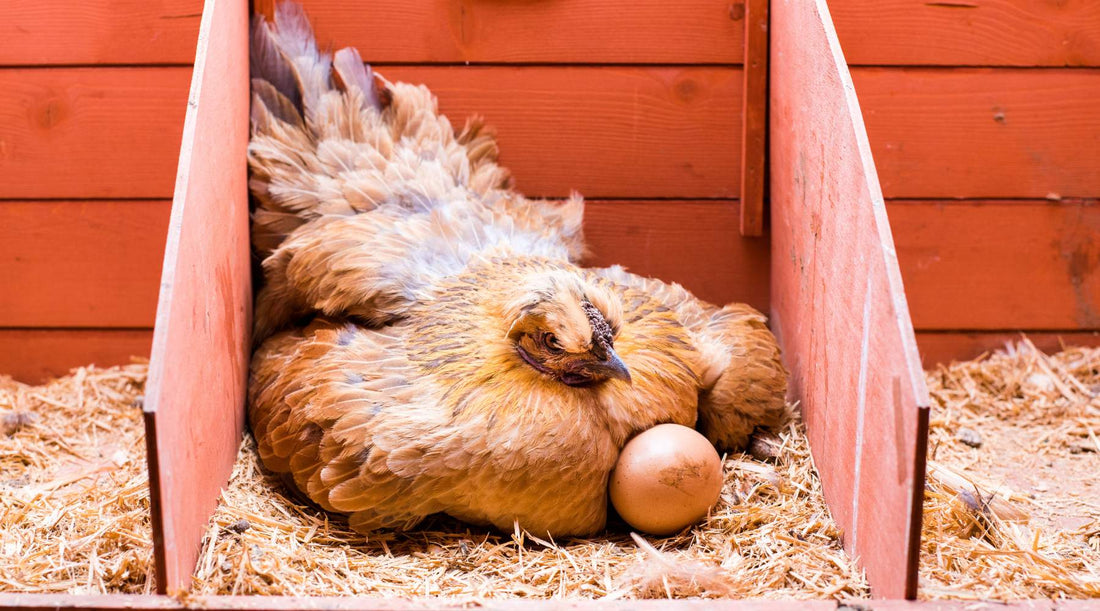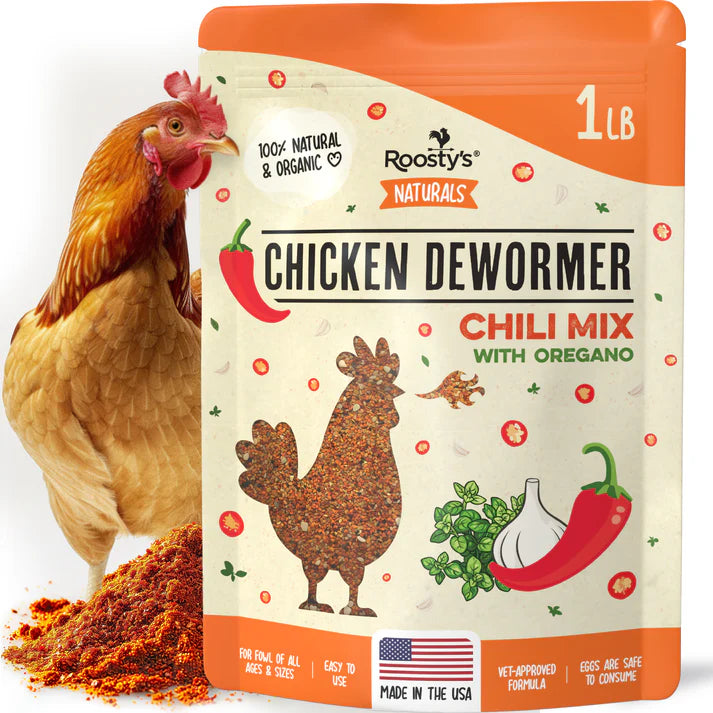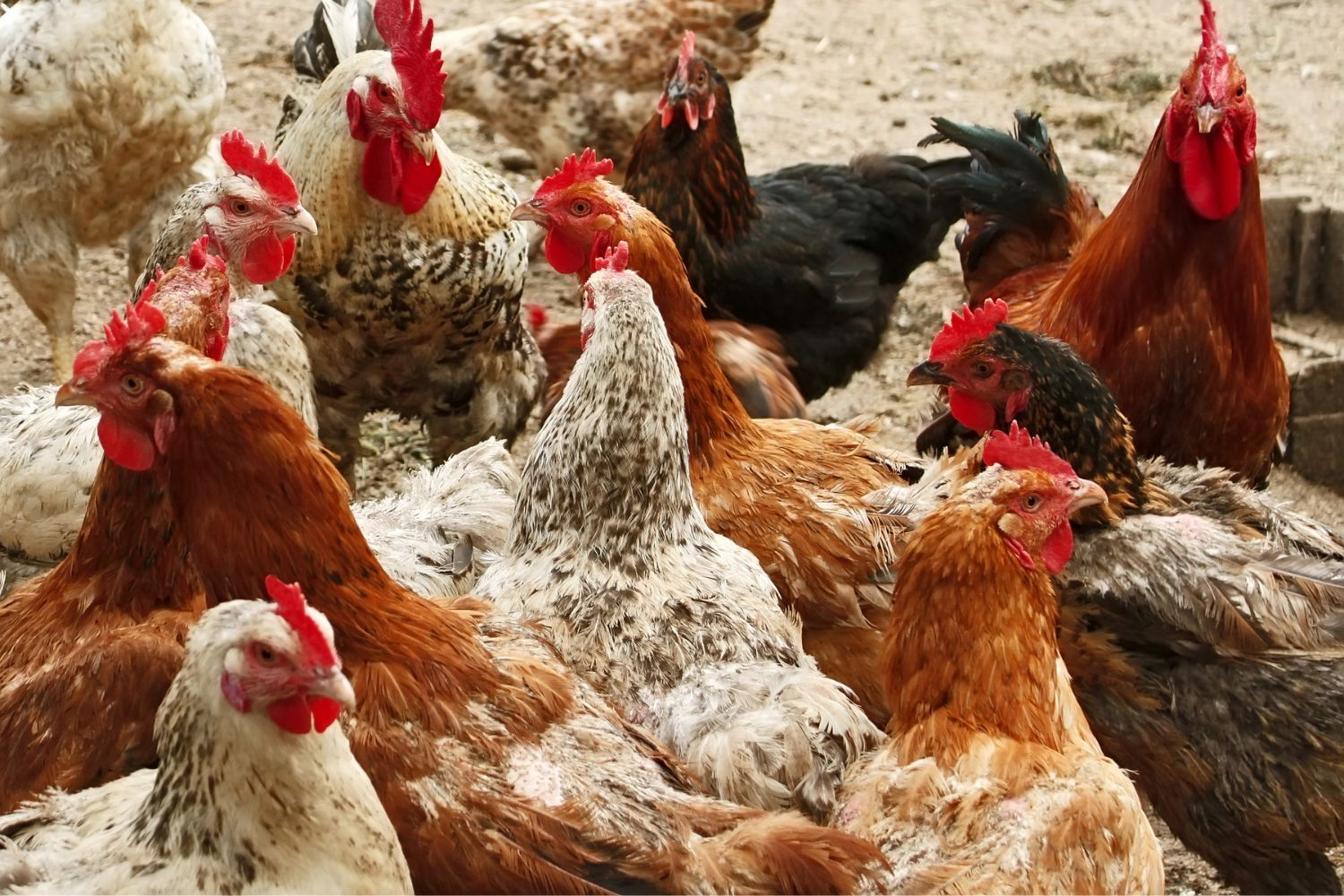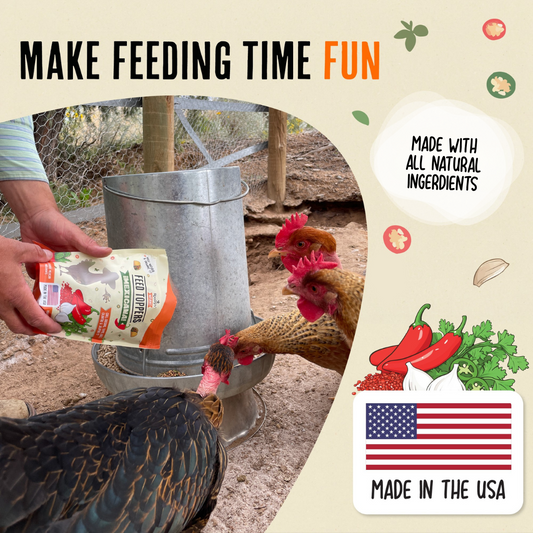
Chicken Nesting Boxes: What’s the Ideal Size for Maximum Comfort?

If you’re planning on building your own chicken nesting box, but aren’t sure how to go about it, you’re in the right place.
There are a lot of things that are important to consider for your chicken nesting box, particularly the size.
Of course, the size that you need can vary based on a lot of factors, so it’s important that you’re ready to plan ahead for the flock you have, and any future developments.
Why do you need a nesting box?
If you’re new to being a flock keeper, you might be wondering whether or not these nesting boxes are essential, and while the hens will still lay eggs without them - they’re important and necessary for a number of reasons.
Not only are they beneficial to your hens, but they’re helpful for you, too.
First of all, your hens are going to lay their eggs where they feel the most comfortable and secure, which can be anywhere - making it much more difficult for you to locate the eggs every time they’ve been laid.
It’s much easier for you to have set spots where you know your hens are going to lay their eggs so that you can save time, and prevent yourself from either missing any or spending a lot of time trying to make sure you’ve got them all.
It’s not just about making them easier to find, but the eggs will also be safer where they are.
They’re not going to get broken, they’re not going to get lost, and they’re just in a much safer space that’s easier for both you and your hens.
There are a number of different nesting box designs that can provide different levels of protection and security for your hens and their eggs, which might be worth you looking into.
Lastly, one of the reasons why many invest in nesting boxes is for the benefit of the hens. It provides a space where your hens can feel safe, secure, and secluded while they lay their eggs.
Consider it like a private cubicle, and you can even add your own curtains to give them that extra layer of privacy that your hens might prefer. Chicken nesting boxes come with far too many benefits to pass up.
--------

Check out our Roosty's Nesting Pads - Click here!
--------
General sizing

So down to the main question, how big should a chicken nesting box be?
Typically, you’ll want your chicken nesting box to be around 12 inches wide, 12 inches long, and 12 inches tall. There are a few benefits to having it this size, and it mostly comes down to the comfort of your hens.
First of all, most chicken breeds can fit comfortably in these dimensions, and the only times you’ll see yourself vary is with either larger breeds like a Jersey Giant, or with smaller breeds like bantam hens.
You’ll find that when your nesting boxes are 12x12x12 inches, your hens have enough space to move around within each box, without it being too cramped - or too large. You might be thinking, why not have it bigger?
Well, the problem is, you don’t want more than one hen in a nesting box at one time - it could potentially save you some space, however, it puts your eggs at risk.
You want the nesting box to be spacious enough for movement, but not too big that hens are roosting together in the same box.
Oftentimes when it comes to nesting boxes, it’s easier to consider how much space you’re going to need before the chicken coop is built - so that you can be ready beforehand, else it can take a lot of work to get the nesting boxes in place.
Being unprepared with your space may also lead you to make compromises that aren’t necessarily good for you or your chickens, so being ready before you’ve got your coop is the best course of action.
How many nesting boxes do you need?
When it comes to how many nesting boxes you need, you might find that there are many different opinions regarding this.
You might think the amount nesting boxes you have should be dependent on how many you can fit - but it should vary based on how many hens you have.
There are many who believe that you should have one nesting space per 5 chickens, however, it’s recommended that you have one nesting box per 3-4 chickens is often better and promotes proper animal welfare according to the Five Freedoms guidance.
So for example, if you’ve got 16 chickens, then ideally you would have as many as 4-5 nesting boxes for your hens to be comfortable with what they have.
Not only is having too little generally bad for your hens, but it can lead to these nesting boxes being easily too full, and putting the eggs at risk.
Nesting boxes being overfilled may lead hens to lay their eggs elsewhere, and can also make it much more likely that you lose eggs to being broken while they’re still in the boxes.
Some nesting box designs can make it easier to have fewer boxes per hen, for example, the rollaway nest box.
The floor of the nesting box is slightly slanted, to allow the eggs to roll out after being laid. Hens might find this design to be less comfortable due to the lack of bedding but is also a preferred design for many keepers.
Placing your nesting box

The placement of your nesting boxes is important, as your hens need to feel safe while they’re using them. Ideally, your nesting boxes should be now lower than 18 inches from the ground.
Having the nesting box this high ensures that your hens can feel safe, and also secluded from what’s going on around them.
Of course, the boxes can be higher than that if needed - for example, if you were going to have multiple rows, 18 inches high should be the minimum height.
--------

Check out our Roosty's Nesting Pads - Click here!
What else does a nesting box need?
Your nesting boxes need to be more than just boxes, and there are a number of things that you’ll want to consider when either making your own or buying some.
For the sake of your hens and the eggs, you should make sure the nesting boxes have everything your chickens need for comfort and safety.
Your hens will need somewhere to stand before entering the nesting box, and having somewhere for them to perch is ideal.
This will make entering and leaving much easier, and also make it much more likely that your hens will use your nesting boxes.
Allowing for a more gentle approach from your hens makes it more likely that eggs will not be broken while inside the nesting box.
Bedding. There are a number of options you have when it comes to bedding, but the most popular for nesting boxes seems to be straw - however, other similar materials can be used.
Your hens might not be overly picky about what kind of bedding you decide to use, so long as it provides some comfort and protection for the eggs.
You’ll also want to make sure that the bedding used is easy to clean, as you’ll be replacing it routinely to keep the nesting boxes hygienic.
You’ll want to make sure that your nesting boxes have a lip on the entrance - as well as the perch.
The lip is there to ensure that nothing is going to fall out easily while the hens are entering and exiting.
You don’t want the eggs to roll out easily, nor the bedding to slide out - so a small lip on the entrance can make a lot of difference.
If your nesting boxes are going to be roofed, then you’ll want to consider the likeliness of your hens roosting on top of them.
The roof can do a lot when it comes to providing that level of comfort and privacy that your hens might prefer, but it’s important that you prevent hens from roosting on the roof.
Preventing this is simple, as all you need to do is have the roof sloped. It doesn’t take up much space to have this slope, and it’s a simple solution to what would be a frustrating issue.
Having curtains installed on the nesting boxes can also help to provide an extra layer of darkness and privacy for your hens.
Of course, you want to make sure the curtains don’t prevent your hens from entering, but overall they can be an effective way of keeping the light out without making it too difficult for your hens to get in and out when they need to.
Typically, hens will prefer these darker spaces, so creating that with your nesting boxes is ideal.
Getting hens to use the boxes
Something you should be prepared for is that your hens might not instantly take to using these nesting boxes.
They might not know what they’re for, or feel comfortable changing from their current preferred nesting spot. There are a number of things you can do and change to help your hens get acclimated to the new nesting boxes in their chicken coop.
You have to remember, that this is all about your hen’s comfort, and making sure they understand where is best for them.
Something that might help is using fake eggs, or something like a ping pong ball as a demonstration.
There are wooden eggs you can pick up for a cheap price, and having them displayed in the nesting boxes might be all you need to get your hens to use them.
Of course, you’ll want to make sure that your hens can see the wooden eggs, which is why it’s generally a good idea to have your nesting boxes on the ground before you raise them to the optimal height.
Have a nesting box or two on the ground, easy for your hens to access, with this demonstration easily in sight.
Your hens might need time to understand what the box is before you raise it off of the ground.
You could also consider that your hens are having difficulty seeing past the curtain. Try keeping the curtains open for some time, until you’ve noticed that your hens are using this new nesting spot.
If you’ve tried all of these things and your hens still seem to prefer other spots for nesting, consider the environment where these nesting boxes are. Are they getting the privacy they need?
Is the area the nesting boxes are too busy and loud?
If so, it might be the reason that they’re not feeling safe when laying their eggs in the boxes. Make sure the boxes are high enough, make sure there’s enough privacy, and make sure it’s not too loud near the nesting boxes.
Preventing chickens from sleeping in nesting boxes
Sometimes nesting boxes can work too well, and you might find that some of your hens prefer roosting inside the nesting boxes.
While this isn’t necessarily the end of the world, it does make it more difficult to keep the nesting box clean and isn’t the best way to go about things.
Typically, this is quite easy to remedy, and all you have to do is make sure the roosting bars are positioned higher than the nesting boxes.
Typically, hens will prefer to roost at the highest point, and having the roosting bars higher than the nesting boxes can help prevent this issue.
Overall
Typically, the size of your nesting boxes should be 12x12x12 inches to properly accommodate your chickens.
There are variations in this, like if you have a flock of larger breeds or smaller breeds - but even then the difference is only a couple of inches difference in width.
The size of the nesting boxes is solely to make sure your hens are comfortable while nesting, without getting them too much space to fit more than one hen at a time.

Check out our Roosty's Nesting Pads - Click here!
--------







